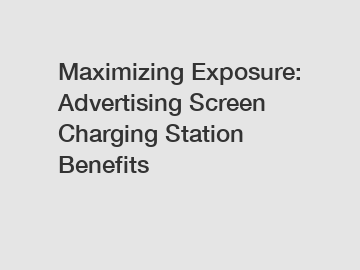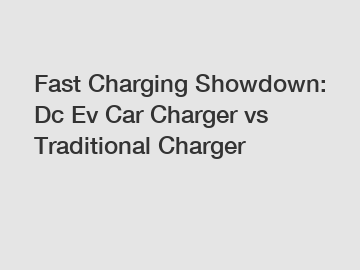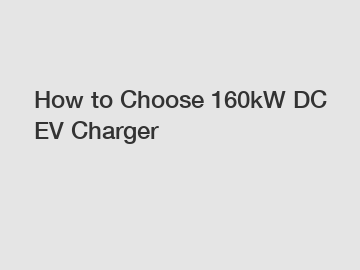How much does a home battery system cost?
All solar batteries have the same basic function, but each type is suited for different applications. Your solar battery will offer higher reliability and return on investment when its chemistry is suitable for the application at hand.
For example, some electricity consumers are subject to higher kWh prices at certain times of the day, or additional charges for sudden peaks in consumption. In this case, you need a battery bank capable of delivering large amounts of electricity in a short time. Lithium-ion batteries are suitable for this task, but not redox flow batteries.
Regardless of the battery type, you also need to consider the depth of discharge (DoD), which indicates a battery’s usable capacity. The service life of a battery can be drastically shortened if you exceed the DoD, or you can even cause permanent damage. For example, using 70% of the stored energy is acceptable with a solar battery rated for 80% DoD, but not a 50% DoD battery.
Lead-Acid
Lead-acid batteries are an established technology, commonly used by off-grid solar energy systems in remote locations. Lead-acid batteries are affordable and have a well-established supply chain due to their popularity, so you can easily find vendors and technical support.
In spite of their low cost, lead-acid batteries have some technical limitations you should consider:
- Lead-acid batteries typically have a charging life of 500 to 1000 cycles.
- Batteries should be fully recharged after each use, or the lifespan is drastically reduced.
An absorbed glass mat or AGM battery is an improved version of the traditional lead-acid battery. They can charge faster while having a spill-proof design and more durability. You can also find AGM deep cycle batteries that are designed for 80% DoD.
Using lead-acid batteries along with solar panels requires charge controllers to sustain a suitable charging current. These batteries should not be wired directly to your solar array, or your system may be damaged by excessive current.
Lithium-Ion
Lithium-ion batteries have become very popular in recent years since they can achieve synergy with solar panels and wind turbines. For example, the Tesla Powerwall and Enphase IQ are two types of lithium-ion batteries commonly used in home solar applications. You can also find smaller lithium batteries from brands like Renogy and WindyNation, which are portable and better suited for DIY solar projects.
Lithium iron phosphate or LFP batteries are a subtype of lithium batteries, characterized by a superior service life. The best LFP batteries offer a service life of over 4,000 cycles at 80% DoD, which means they can last for over 10 years on a daily charging cycle. This makes LFP batteries the ideal complement to solar installations. Unlike lead-acid batteries, which need separate charge controllers, many of the lithium battery models that are commercially available come with built-in chargers and controls.
The main drawback of lithium-ion batteries is the high price, but this could change in the near future — the U.S. Department of Energy is targeting a 90% energy storage cost reduction by 2030. Lithium batteries can also suffer a phenomenon called thermal runaway when used at high temperatures, which causes them to catch fire. You can prevent thermal runaway by making sure your batteries are high-quality and installed by qualified electricians.
Nickel-Cadmium
Nickel-cadmium batteries are characterized by their durability, tolerance to high temperatures and simple maintenance needs. Thanks to these performance features, nickel-cadmium batteries are popular in industrial and utility applications. Unfortunately, cadmium is highly toxic to humans, so nickel-cadmium batteries are not recommended in homes.
Flow
Flow batteries store energy by separating positive and negative electrical charges in chemical solutions, which are stored in separate tanks. When these two solutions interact, they undergo a reduction-oxidation reaction (redox) and the battery releases energy. This battery technology is also referred to as “redox flow” for this reason.
The main disadvantage of redox flow batteries is their space requirement, and they are not cost-effective for small-scale projects. Even a small redox flow battery system can be the size of a shipping container, so using flow batteries in home solar systems is not viable.
Whole home battery backup systems are making their way into homes and replacing the noisy, pollutant-emitting fossil fuel generators that used to be standard.
Battery backup systems allow homeowners to weather even extended power outages and blackouts. With the right equipment, a whole home backup power solution can power an average household for at least a day and up to a week. If your battery backup system allows solar charging, you can add solar panels to generate clean, renewable electricity indefinitely.
Whole home battery backup systems typically cost between $3000 and $15,000 before installation. The prices vary widely depending on power output and storage capacity, home size, average electricity usage, and other factors.
Factors That Affect the Cost of a Whole House Battery Backup System
Many factors come into play when pricing out a whole-house backup system. These include:
- Battery size
- Power output capacity
- Installation
- Charging options
- Electricity Generation
Battery Size
Battery storage capacity is a significant factor in the cost of a whole-house backup system. Larger systems can store more electricity and provide backup power for longer, but they also cost more. Battery cost is often the largest share of the total system cost. Increasing the battery size or adding additional storage will almost always increase the overall cost of the system.
However, the cost per kilowatt-hour (kWh) of electricity storage decreases as the battery size increases. It may be more cost-effective to install a more extensive system to increase the backup time and reduce the need for supplemental backup power sources, such as a traditional fossil fuel generator.
Determining the optimal battery size for your home backup needs is based on additional factors like:
- Your average energy consumption,
- How many appliances you need to run during a blackout
- Their starting and running watts
- The duration of the outage you want to be prepared against
According to the U.S. Energy Information Administration, the average household uses 886 kWh of electricity per month (or about 30 kWh per day). To maintain this level of electricity consumption, you’d need a backup battery system size of 30 kWh just to run your house as normal for one day during a blackout.
However, you can take steps during a blackout to reduce energy usage, decreasing the battery storage capacity you need to install and maintain. To minimize your electricity usage, keep these tips in mind:
- Only open the refrigerator and freezer when necessary.
- Use air conditioning and heating systems as little as possible.
- Use led lights (which consume far less electricity than conventional light bulbs) and flashlights instead of your home’s lighting system.
Power Output Capacity
Batteries store power as DC electricity. You’ll need an inverter or an all-in-one battery backup solution like EcoFlow’s portable power stations to convert the energy stored in your battery into AC (household) electricity.
Battery storage capacity and power output capacity are not the same things. Storage capacity is the maximum amount of energy that your battery can hold at any given time. Storage capacity is typically measured in watt-hours (Wh) or kilowatt hours (kWh).
Power output capacity is the maximum amount of electricity your battery backup system can output at once. Power output capacity determines what kind of appliances you can run based on their electricity demands — usually measured in watts (W) or kilowatts (kW).
You can determine which appliances your battery backup system can run simultaneously by adding up the running wattage of each device you want to operate. One crucial thing to keep in mind is that many large appliances require more wattage to start up than they do to operate. This is called starting watts or surge power.
Here’s how to determine your power output needs step by step.
- Identify the wattage requirements of your appliances. Survey the starting and running wattage requirements of the appliances and devices you plan to plug into the generator. You can usually find the wattage requirements labeled on the appliance, but we’ve also compiled the starting and running watts of typical household appliances in the table below.
- Convert volts/amps to watts. If your appliance’s power requirements are in volts or amps, you can calculate an appliance’s running watts with this equation:
Volts (V) x Amps (A) = Watts (W)
Suggested reading:Energy
- Count the running watts of your appliances. Add up the running watts of the appliances you plan to use — does the total exceed the running watts listed on your generator? If so, you should consider buying a generator with more output capacity.
- Factor in starting watt requirements. Identify the appliance with the highest starting wattage. Add that appliance’s starting wattage to the running wattage total.
- Calculate the sum. That final number is the total starting watts you need from your generator. As discussed above, to avoid overloading your generator, do not exceed its starting watts rating.
Starting and Running Watts of Typical Household Appliances
ApplianceRated (Running) WattsStarting WattsDishwasher13001800Washing Machine12002300Refrigerator/Freezer7002200Light Bulb60-750Microwave600-10000TV5000Toaster9000Vacuum14402500Coffee Maker10000Blender300800Clothing Iron15000Dryer54007000Toaster Oven12000Curling Iron15000Space Heater20000Laptop50-300020” Box Fan200350Installation
Energy storage - IEA
What is the chain selection process?
How do I choose a conveyor chain?
Where does electricity come from? | The journey of ...
How much is a battery backup system vs generator?
Battery Backup vs. Generator: How to Choose | Get the Facts
Depending on what kind of home battery backup system you buy, installation costs can add up quickly. Standalone portable power stations are plug-and-play. You’ll only have to pay minor installation costs if you want to integrate your whole house backup battery solution with your existing home wiring.
An electrician will need to connect the system to your home circuit board using a transfer switch or a solution like EcoFlow’s EcoFlow Smart Home Panel.
Generating Electricity During a Blackout
Keeping your whole home battery backup system topped up with power is easy when the grid is up and running. You can keep the system or portable power station fully charged with electricity from the grid to ensure your batteries are full when the lights go out.
But recharging from the grid isn’t an option during an extended outage. For added energy security, it’s best to opt for a solution with multiple charging options — including solar.
For example, by adding four rigid or portable 400W solar panels to EcoFlow’s EcoFlow DELTA Pro portable power station, you can generate up to 1600W of electricity simultaneously and fully recharge the battery in 2.8 to 5.6 hours (depending on environmental factors).
Another option with the EcoFlow DELTA Pro is adding a Smart Generator Dual Fuel. The Smart Generator operates on clean-burning, easy-to-store propane (or gasoline) to provide a last line of defense if your battery storage runs out.
You could also opt for EcoFlow DELTA Pro Ultra. Starting with a 6kWh capacity, this powerful portable power station can reach a whopping 90kWh capacity, making it easy for it to grow with you if needed. You can add up to 42 400W Rigid Solar Panels to achieve 16.8kW of solar charging potential!
Which Whole House Battery Backup System Is Right for You?
There are various whole-house battery backup systems on the market to choose from. You can build one from scratch step-by-step. Or you can customize a setup that meets your family’s needs by selecting products from EcoFlow’s Smart Home Ecosystem.
When determining the best option, remember it’s about much more than just price.
Other significant factors to consider are the backup battery system’s expected lifespan, recharge time, ongoing maintenance requirements, battery chemistry and efficiency, and warranty.
Expected Lifespan
You may be tempted to choose the cheapest available whole house battery backup system, but what if you have to replace it in just a year or two?
A battery’s estimated lifespan is usually measured by cycle life. Each time you discharge and recharge the battery is called a cycle.
The number of cycles the battery will last without diminishing in efficiency is largely determined by its chemistry.
Battery Chemistry and Efficiency
The cheapest backup battery chemistry option is lead acid. The basic technology behind lead acid batteries is over 150 years old. These are the batteries you’ll find in TV remotes, flashlights, and old cars.
Lead acid batteries might get the job done, but not for long. Typically, lead acid batteries are only rated for a few hundred cycles, as opposed to new battery technology — like lithium iron phosphate (LFP/LiFePO4) — which can last for thousands of cycles without losing efficiency.
Lithium ion and LFP batteries have drastically reduced in price in recent years as the technology has become standard for solar generators, electric vehicles (EVs), and whole-home battery backup.
For example, the latest generation of lithium iron phosphate batteries in EcoFlow’s EcoFlow RIVER 2 Series and EcoFlow DELTA Pro portable power stations can last 6500 cycles — over a decade of average use.
Over the long term, you’ll save money by investing in modern battery technology like LFP.
Nickel-cadmium (Ni-Cad) batteries are also a better choice than lead acid, but they pale in comparison to LFP.
Maintenance
Lead acid battery systems require constant maintenance, such as adding distilled water every 2 to 4 weeks. Also, lead acid batteries should never be discharged below 50% capacity as it will lead to permanent damage. They must be stored in well-ventilated areas and may not function in extreme cold or heat.
Lithium iron phosphate batteries do not require regular maintenance, can be deeply discharged without harm, and operate in a much wider temperature range.
Warranty
Many cheap or low-quality battery backup systems will not include an extended warranty. This usually indicates that the manufacturer doesn’t stand behind their products.
Reputable companies will offer extended warranties for their products.
For instance, EcoFlow provides five-year warranties to their portable power stations, including the Delta PRO models in their Whole Home Backup Power Solution.
Final Thoughts
Whole home battery backup systems are an excellent way to prevent your family from being affected by power outages. With a big enough battery bank, you can even keep larger appliances running, such as refrigerators, heating and cooling systems, and more.
The Whole Home Backup Power Solution is a great way to get started on making your house more energy-resilient. The system is expandable, so you can always add more battery and output capacity down the line.
Best of all, solar panels are easily integrated into the system to generate clean, renewable power indefinitely.
How much does a home battery system cost?
How Much Does a Whole Home Battery Backup System Cost?
Suggested reading:Is Battery Backup Worth It?
How Air Diaphragm Pumps Work | ARO Fluid Handling
How Much Do Solar Panels Cost? (2023 Guide) - MarketWatch
Harnessing the sun: The rise of solar roof tiles in Australia
The Cost Of Solar Batteries: Are They Worth It In 2024?
How do you calculate AC cost?
Diesel Performance Upgrades to Bump Up Your Horsepower




